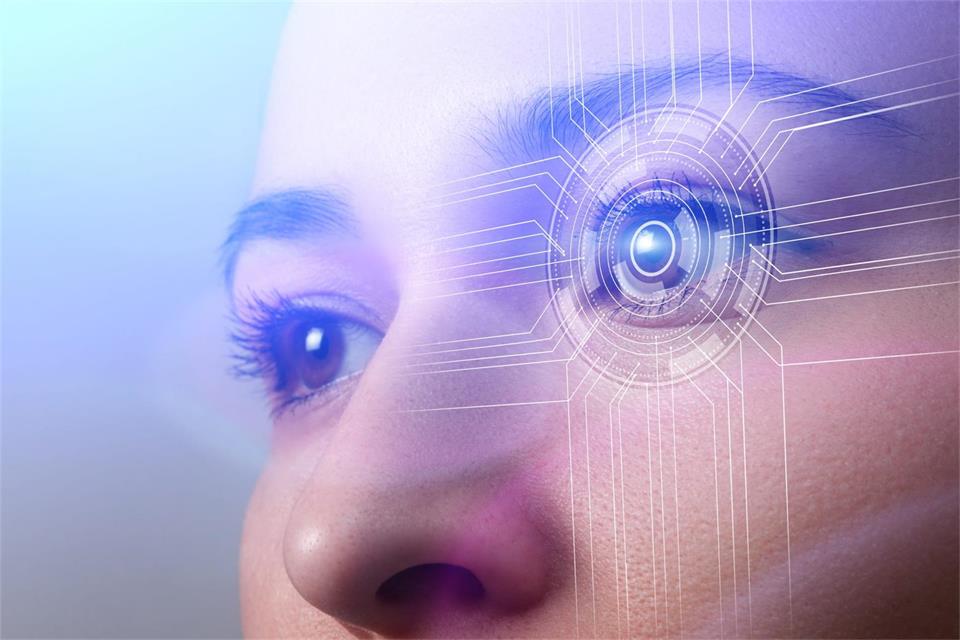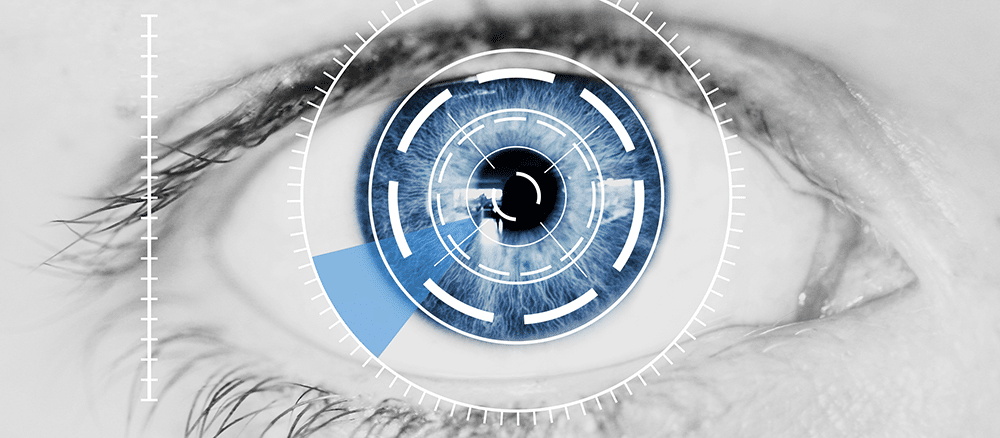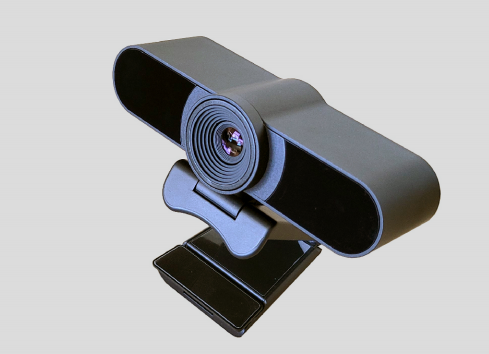What is Iris Recognition Technology?
Iris Recognition is a biometric method of identifying people based on unique patterns within the ring-shaped region surrounding the pupil of the eye. Every iris is unique to an individual, making it an ideal form of biometric verification.
Whilst Iris Recognition remains a niche form of biometric identification, we can expect it to become more prevalent over the coming years. Immigration control is one area expected to push forward with wider use of Iris Recognition as a safety measure and a response to the threat of terrorism around the world.
One of the reasons Iris Recognition is such a sought after method of identifying individuals, especially in sectors such as law enforcement and border control, is that iris is a very strong biometric, highly resistant to false matches and the high search speed against large databases. Iris Recognition is an extremely reliable and strong method to accurately identify individuals.
How Iris Recognition works
Iris recognition is to determine the identity of people by comparing the similarity between iris image features. The process of iris recognition technology generally includes the following four steps:
1. Iris image acquisition
Use specific camera equipment to shoot the whole eye of the person, and transmit the captured image to the image preprocessing software of the iris recognition system.
2.Image preprocessing
The acquired iris image is processed as follows to make it meet the requirements of extracting iris features.
Iris Positioning: Determines the position of inner circles, outer circles, and quadratic curves in the image. Among them, the inner circle is the boundary between the iris and the pupil, the outer circle is the boundary between the iris and the sclera, and the quadratic curve is the boundary between the iris and the upper and lower eyelids.
Iris image normalization: adjust the size of the iris in the image to the fixed size set by the recognition system.
Image enhancement: For the normalized image, perform brightness, contrast, and smoothness processing to improve the recognition rate of iris information in the image.
3. Feature extraction
Using a specific algorithm to extract the feature points required for iris recognition from the iris image and encode them.
4. Feature matching
The feature code obtained by feature extraction is matched with the iris image feature code in the database one by one to judge whether it is the same iris, so as to achieve the purpose of identification.
Advantages and disadvantages
Advantages
1. user-friendly;
2. Possibly the most reliable biometrics available;
3. No physical contact is required;
4. High reliability.
Fast and convenient: With this system, you don’t need to carry any documents to realize door control, which can be one-way or two-way; you can be authorized to control one door, or control the opening of multiple doors;
Flexible authorization: The system can adjust user permissions arbitrarily according to management needs, and keep abreast of user dynamics, including customer identity, operating location, function and time sequence, etc., to achieve real-time intelligent management;
Unable to copy: This system uses iris information as the password, which cannot be copied; and every activity can be automatically recorded, which is convenient for traceability and query, and it will automatically call the police if it is illegal;
Flexible configuration: users and managers can set different installation and operation modes according to their own preferences, needs or occasions. For example, in public places such as the lobby, you can only use the method of entering the password, but in important occasions, the use of passwords is prohibited, and only the iris recognition method is used. Of course, the two methods can also be used at the same time;
Less investment and maintenance-free: the original lock can be retained by assembling this system, but its mechanical moving parts are reduced, and the movement range is small, and the life of the bolt is longer; the system is maintenance-free, and can be expanded and upgraded at any time without repurchasing equipment. In the long run, the benefits will be significant, and the management level will be greatly improved.
Wide range of application industries: widely used in coal mines, banks, prisons, access control, social security, medical care and other industries;
Disadvantages
1. It is difficult to miniaturize the size of image acquisition equipment;
2. The cost of equipment is high and cannot be widely promoted;
3. The lens may produce image distortion and reduce reliability;
4. Two modules: hardware and software;
5. An automatic iris recognition system includes hardware and software two modules: iris image acquisition device and iris recognition algorithm. Corresponding to the two basic problems of image acquisition and pattern matching respectively.
Applications Case
John F. Kennedy International Airport in New Jersey and Albany International Airport in New York have installed iris recognition devices for staff security checks. Only through the detection of the iris recognition system can they enter restricted places such as the apron and baggage claim. Frankfurt Airport in Berlin, Germany, Schiphol Airport in the Netherlands and Narita Airport in Japan have also installed iris entry and exit management systems for passenger clearance.
On January 30, 2006, schools in New Jersey installed iris recognition devices on campus for security control. Students and employees of the school no longer use any form of cards and certificates. As long as they pass in front of the iris camera, they will The location, the identity will be recognized by the system, and all outsiders must log in with iris information to enter the campus. At the same time, access to this activity range is controlled through the central login and authority control system. After the system is installed, all kinds of violations of school rules, violations and criminal activities in the campus are greatly reduced, which greatly reduces the difficulty of campus management.
In Afghanistan, the United Nations (UN) and the United Nations refugee agency (UNHCR) of the US Federal Refugee Agency (UNHCR) use the iris recognition system to identify refugees to prevent the same refugee from receiving relief items multiple times. The same system is used in refugee camps in Pakistan and Afghanistan. A total of more than 2 million refugees have used the iris recognition system, which has played a key role in the distribution of humanitarian aid provided by the United Nations.
Since October 2002, the UAE has started iris registration for deported foreigners. By using the iris recognition system at airports and some border inspections, all foreigners deported by the UAE are prevented from re-entering the UAE. The system not only prevents deportees from re-entering the country, but also prevents those who are undergoing judicial inspection in the UAE from forging documents to leave the country without authorization to escape legal sanctions.
In November 2002, an iris recognition system was installed in the baby room of the city hospital in Bad Reichenhall, Bavaria, Germany to ensure the safety of babies. This is the first application of iris recognition technology in baby protection. The security system only allows the baby's mother, nurse or doctor to enter. Once the baby is discharged from the hospital, the mother's iris code data is deleted from the system and no longer allowed access.
The health care systems of the three cities of Washington, Pennsyvania and Alabama are based on the iris recognition system. The system ensures that patient medical records cannot be viewed by unauthorized persons. HIPPA employs a similar system to ensure the privacy and security of personal information.
In 2004, LG IrisAccess 3000 iris readers were installed in the Cloud Nine penthouse suites and staff corridors at the Nine Zero Hotel, part of the Kimpton Hotel Group in Boston.
The iris recognition system is applied in the gymnasium of the Equinox Fitness club in Manhattan, which is used for the club's VIP members to enter a dedicated area equipped with new equipment and the best coaches.
The iris recognition system developed by Iriscan in the United States has been applied to the business department of the United Bank of Texas in the United States. Depositors handle banking business. As long as the camera scans the user's eyes, the user's identity can be verified.
Post time: Mar-17-2023








